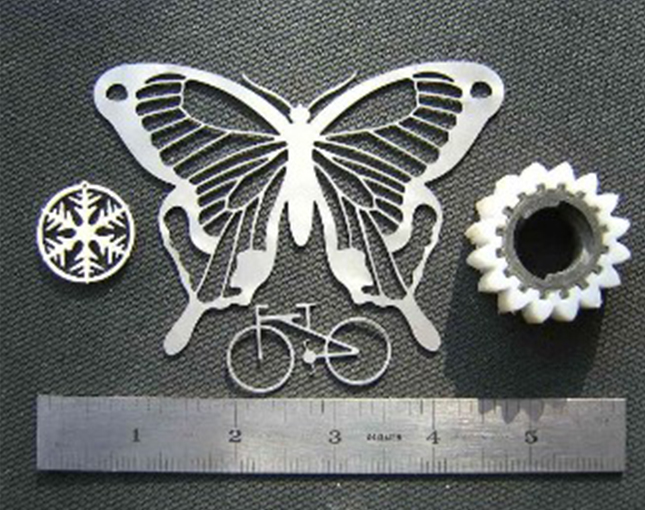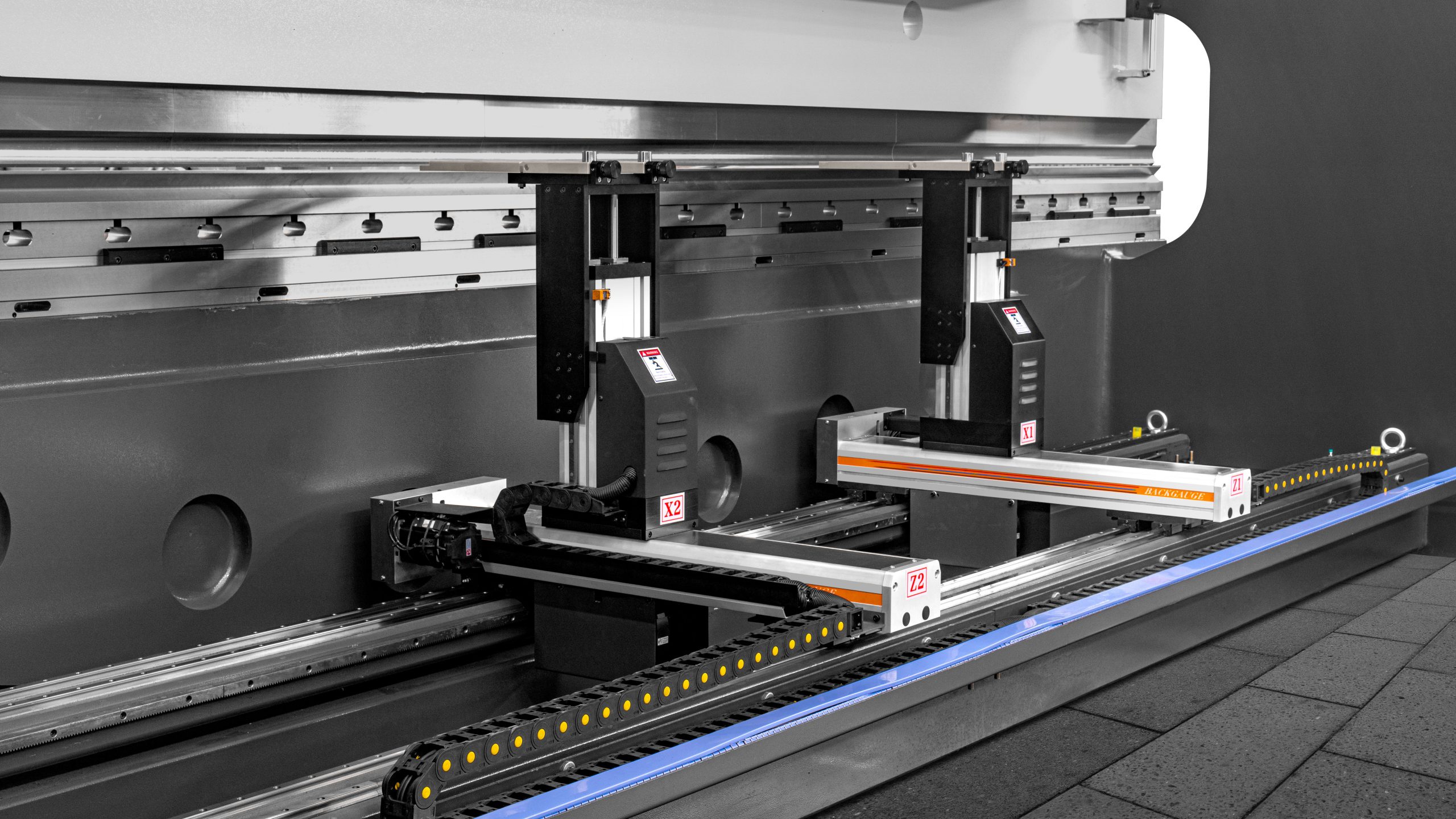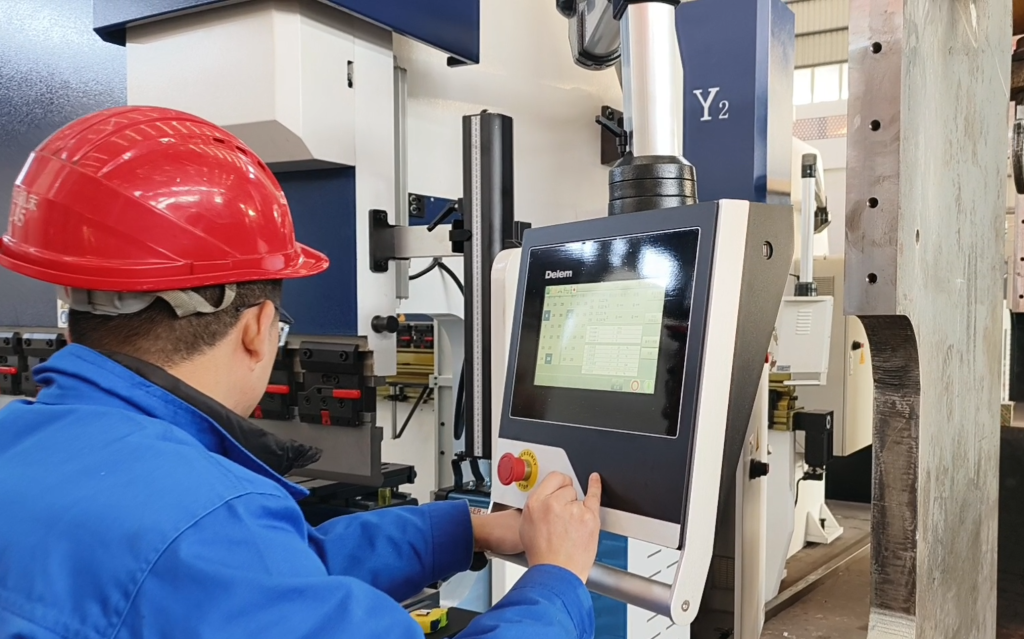Ligue para nós hoje!+86 18055583040|admin@zymtcnc.com

Ligue para nós hoje!+86 18055583040|admin@zymtcnc.com

1.
Mechanical structure design
1. Whether the overall mechanical structure design of the bending machine is reasonable is crucial. If there are defects in the design, such as low matching accuracy and insufficient rigidity between the components, it will directly affect the accuracy of the bending.
2. Unreasonable structure may deform when subjected to force, resulting in inaccurate bending angle or dimensional deviation.
2.
Manufacturing quality
1. The processing accuracy of parts is the basic factor affecting the accuracy of the bending machine. If the processing accuracy of key components such as sliders and workbenches is not high and the surface roughness is too large, the contact between the workpiece and the equipment will be unstable during the bending process, thereby affecting the bending accuracy.
2. Assembly quality will also affect the accuracy. If the assembly process is not strictly carried out in accordance with the standards, the gaps between the components are uneven, the installation is not firm, etc., which will cause errors during use.

1.
Mold quality
1. The accuracy of the bending mold directly determines the accuracy of the bending workpiece. High-quality molds should have precise dimensions, good hardness and wear resistance.
2. If the mold is severely worn, deformed or has large dimensional deviations, it will lead to inaccurate bending dimensions and inconsistent angles.
2.
Mold installation
1. The mold must be installed correctly and firmly. If it is installed improperly, such as the mold is not parallel to the worktable of the bending machine, the installation position is inaccurate, etc., the workpiece will be unevenly stressed during the bending process, affecting the bending accuracy.

1.
Operator skills
1. The operator's technical level and experience have a great impact on the accuracy of the bending machine. Skilled operators can accurately adjust equipment parameters, correctly install molds, and select appropriate bending processes according to different workpiece materials and thicknesses.
2. Inexperienced operators may cause accuracy problems due to improper operation, such as incorrect adjustment parameters, uneven operating speed, etc.
2.
Process parameter setting
1. The setting of process parameters such as bending force, bending speed, and bending angle directly affects the bending accuracy. If the parameter setting is unreasonable, the workpiece will have problems such as excessive deformation and rebound during the bending process, thereby affecting the accuracy.
2. Different workpiece materials and thicknesses require different process parameters, and operators should adjust them according to actual conditions.

1.
Temperature changes
1. Temperature changes will cause the mechanical parts of the bending machine to expand and contract, thus affecting the accuracy of the equipment. Especially under high-precision bending requirements, small dimensional changes may lead to large errors.
2. The temperature of the working environment of the bending machine should be kept stable as much as possible to avoid excessively high or low temperatures.
2.
Vibration
1. The vibration of the surrounding environment will be transmitted to the bending machine, affecting the stability and accuracy of the equipment. For example, the operation of heavy equipment nearby and traffic vibrations may cause vibrations of the bending machine.
2. The bending machine should be installed on a stable foundation and shock-absorbing measures should be taken to reduce the impact of vibration on accuracy.
If the bending machine has high accuracy, the dimensional deviation of the product will be extremely small. When producing precision parts or products with strict dimensional requirements, high-precision bending machines can ensure that the dimensional parameters such as the length of each side of the product and the bending position are accurate. For example, in the production of electronic equipment housings, dimensional accuracy directly affects the installation matching of internal electronic components. If the bending size is inaccurate, the housing may not be tightly assembled, affecting the overall sealing and protection performance of the product. For some mechanical structural parts, dimensional accuracy is even more related to the assembly accuracy and operating stability of the entire mechanical system. A slight deviation may cause mechanical failure or reduce equipment performance.
The accuracy of the bending machine determines the accuracy of the product bending angle. A high-precision bending machine can ensure that the bending angle is highly consistent with the design requirements, so that the product appearance is regular and meets the design standards. Taking metal furniture manufacturing as an example, bending parts with precise angles can make the overall structure of the furniture more stable and more convenient to install, while also improving the beauty of the furniture. In the field of architectural decoration, such as stainless steel railings, aluminum gussets and other products, angle accuracy directly affects the overall effect and safety after installation. If the bending angle deviation is large, it will not only affect the appearance quality of the product, but may also cause installation difficulties and even affect the product's use function.
High-precision bending machines can better control the force of the workpiece during the bending process, and reduce surface scratches, indentations and other defects caused by uneven force. For some products with high surface requirements, such as stainless steel kitchenware, automotive decorative parts, etc., good surface quality is essential. Insufficient bending machine precision may cause obvious damage to the workpiece surface, affect the appearance and corrosion resistance of the product, and reduce the market competitiveness of the product.
The high precision of the bending machine means that the consistency of the product can be guaranteed in batch production. Whether it is the same batch or different batches of products, they can maintain similar sizes, angles and surface quality. This is especially important for products that need to be assembled, such as electronic product shells, mechanical parts, etc. Highly consistent products can improve production efficiency, reduce adjustments and rework during assembly, and reduce production costs. At the same time, it can also enhance the brand image and market credibility of the product.
1.
Reasonable selection
1. When purchasing a bending machine, you should choose equipment with high precision and reliable quality according to actual production needs. Inspect whether the mechanical structure design of the equipment is reasonable, and whether the processing accuracy and assembly quality of key components are excellent.
2. Understand the technical parameters of the equipment, such as repeated positioning accuracy, angle accuracy, etc., to ensure that it meets production requirements.
2.
Regular maintenance
1. Develop a strict equipment maintenance plan and regularly maintain and inspect the bending machine. Clean the dust and oil on the surface and inside of the equipment to prevent impurities from affecting the accuracy of the equipment.
2. Check whether the connection of each component is loose, and tighten the bolts and nuts in time. Regularly inspect and replace easily worn parts such as sliders and molds to ensure that they are in good working condition.
1.
Selection of high-quality molds
1. Select high-precision and high-quality bending molds. The dimensional accuracy, hardness and wear resistance of the mold should meet production requirements.
2. Regularly inspect and maintain the mold, and repair the worn and deformed mold in time.
2.
Correctly install the mold
1. When installing the mold, make sure that the mold is parallel to the working table of the bending machine and the installation position is accurate. Use professional installation tools and methods to ensure that the mold is firmly installed.
1.
Skill training
1. Provide professional skills training to operators to make them familiar with the operation methods and process parameter settings of the bending machine. Master the bending skills of workpieces of different materials and thicknesses to improve the operation level.
2. The training content should include equipment adjustment, mold installation and replacement, process parameter optimization and other aspects.
2.
Standardized operation
1. Operators are required to operate strictly in accordance with the operating procedures to avoid affecting the bending accuracy due to improper operation. For example, when adjusting the equipment parameters, it must be accurate and the operating speed must be uniform and stable.
1.
Temperature control
2.
Reduce vibration
1. Install the bending machine on a stable foundation and take shock-absorbing measures to reduce the impact of vibration in the surrounding environment on the accuracy of the equipment. For example, install shock-absorbing pads at the bottom of the equipment.
1. Regular inspection
1. Regularly inspect the quality of the bent products, use measuring tools such as calipers and angle rulers to measure the size and angle of the products, and find out the accuracy problems in time.
2. Adjustment and optimization
1. According to the test results, adjust and optimize the process parameters of the bending machine. For example, adjust the bending force, bending speed, bending angle and other parameters to improve the product accuracy. At the same time, make necessary adjustments and repairs to the equipment to ensure that it is in the best working condition.
1. Check the equipment manual and technical specification table to understand the nominal accuracy indicators of the bending machine, including angle accuracy, straightness accuracy, repeat positioning accuracy, etc. For example, the angle accuracy of some high-precision bending machines can reach within ±0.5°, and the straightness accuracy is controlled within a few wires (1 wire = 0.01 mm) within a certain length range.
2. Compare the parameters of bending machines of different manufacturers or models to understand the accuracy level of similar equipment in the industry, so as to have a reasonable expectation of the bending machine used.
1.
Angle measurement
1. Use an angle ruler or a universal angle meter to measure the angle of the workpiece after bending. Place the measuring tool accurately at the bend of the workpiece and read the angle value. Measure the angles at different positions multiple times to ensure the consistency of the angle.
2. For workpieces with higher requirements, optical projectors or coordinate measuring machines can be used for more accurate angle measurements. These devices can provide higher measurement accuracy and more detailed angle data.
2.
Straightness measurement
1. Use a ruler or feeler gauge to measure the straightness of the workpiece. Place the ruler or feeler gauge along the edge of the workpiece and check the gap between the workpiece and the measuring tool. The smaller the gap, the better the straightness.
2. For longer workpieces, laser interferometers or levels can be used for straightness measurements. These devices can provide more accurate straightness data and can detect minor bending deformations.
3.
Dimension measurement
1. Use calipers, micrometers and other measuring tools to measure the length, width, thickness and other dimensions of the workpiece. Ensure that the dimensions of the workpiece are within the tolerance range required by the design.
2. For workpieces with complex shapes, a three-dimensional coordinate measuring machine can be used for three-dimensional dimension measurement. This equipment can quickly and accurately measure the various dimensional parameters of the workpiece and generate a detailed measurement report.
1.
Surface quality
1. Check whether the surface of the bent workpiece is smooth and has no obvious scratches, indentations and other defects. If the surface quality is poor, it may be caused by insufficient precision or improper operation of the bending machine.
2. Observe whether there are obvious wrinkles or deformations at the bend of the workpiece. High-quality bends should be flat, smooth, and have no obvious signs of deformation.
2.
Angle consistency
1. Observe whether the bending angles of workpieces in the same batch or different batches are consistent. If the angle difference is large, it means that the accuracy of the bending machine is unstable and may not meet the standards.
3.
Dimension consistency
1. Measure the dimensions of multiple workpieces and check the consistency of the dimensions. If the dimensional deviation is large, it means that there is a problem with the accuracy of the bending machine and it may not meet the production requirements.
1. Batch production test
1. Conduct batch production tests to observe the accuracy stability of the bending machine during long-term operation. If problems such as decreased accuracy and increased dimensional deviation occur in batch production, it means that the accuracy of the bending machine may not meet the standards.
2. Complex workpiece test
1. Perform bending tests on complex-shaped workpieces on the bending machine to test the accuracy of the equipment when handling complex processes. If the bending of complex workpieces can be completed accurately, it means that the bending machine has high accuracy and meets the standards.
1. Understand the standards and specifications of related industries, such as mechanical processing industry standards, sheet metal processing standards, etc. These standards usually have clear provisions on the accuracy requirements of bending machines, which can be used as a reference for judging whether the accuracy of bending machines meets the standards.
2. Consult professional organizations or industry experts to understand the general requirements and evaluation methods for the accuracy of bending machines in the industry. Their experience and suggestions can help you more accurately judge whether the accuracy of the bending machine meets the standards.